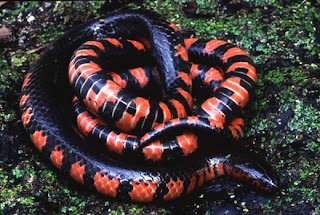The lists below indicate the 10 most venomous species within each category. They do not however take into consideration the venom yield.
1. Inland Taipan (Oxyuranus microlepidotus)
2. Eastern Brown Snake (Pseudonaja textilis)
3. Dubois's Sea Snake (Aipysurus duboisii)
4. Yellow-bellied Sea Snake (Pelamis platurus)
5. Horned Sea Snake (Acalyptophis peronii)
6. Coastal Taipan (Oxyuranus scutellatus)
7. Many Banded Krait (Bungarus multicinctus)
8. Black Banded Sea Snake (Hydrophis melanosoma)
9. Beaked Sea Snake (Enhydrina schistosa)
10.Congo Water Cobra (Boulengeria christyi)
1. Inland Taipan (Oxyuranus microlepidotus)
2. Eastern Brown Snake (Pseudonaja textilis)
3. Dubois's Sea Snake (Aipysurus duboisii)
4. Yellow-bellied Sea Snake (Pelamis platurus)
5. Horned Sea Snake (Acalyptophis peronii)
6. Coastal Taipan (Oxyuranus scutellatus)
7. Many Banded Krait (Bungarus multicinctus)
8. Black Banded Sea Snake (Hydrophis melanosoma)
9. Beaked Sea Snake (Enhydrina schistosa)
10.Congo Water Cobra (Boulengeria christyi)








